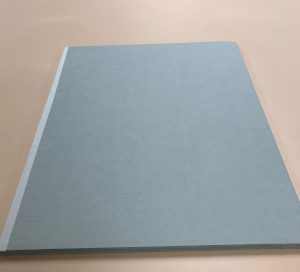In honor of Preservation Week, our Special Collections Conservator, Natalie Granados is sharing some of the work she does to ensure that all of our collections are getting the care and maintenance they deserve.
Handling Books and Papers
Written by Natalie Granados (@natartlie). Special Collections Conservator – UConn Library.
Improper handling and incorrect storage can have negative effects on the lifespan of your books and papers. In addition, damage is often cumulative and can go unnoticed till it’s too late. Good handling practices will reduce common damages as well as the need for a conservator. The downloadable guide (Collection Handling: Quick Tips) that accompanies this post provides tips to help you care for collections and ensure their survival for future generation’s use. Below you’ll also find general information on the books and flat materials and how they are affected by improper handling. Like the cultural superhero that you are though, you know that handling everything with care even if it doesn’t look fragile is the way to go.
Books

 Keep in mind that books are subject to structural stress. Few bindings can open completely flat. For this reason, they should always be supported (with book cradles, for example) when open. When opening new or newly bound books, try not to open them from the center, as this can break the structure. Start from the front and then back, and open them gradually, section by section till you reach the middle. This slowly eases them open and flexes the new structure gently.
Keep in mind that books are subject to structural stress. Few bindings can open completely flat. For this reason, they should always be supported (with book cradles, for example) when open. When opening new or newly bound books, try not to open them from the center, as this can break the structure. Start from the front and then back, and open them gradually, section by section till you reach the middle. This slowly eases them open and flexes the new structure gently.
Flat Material
Paper is highly susceptible to physical damage such as creasing or tearing. In addition, if graphite, charcoal, pastel and/or watercolor pieces are abraded, the damage is permanent. Consider storing and moving this type of material in an enclosure or over heavy-weight paper or board.
Speaking of Enclosures

 Besides protecting from temperature and relative humidity variations, light, pollutants and insects, enclosures (boxes, portfolios, sleeves and envelopes) can protect valuable and fragile material from accidents and incorrect transportation. Since objects are most vulnerable to damage when they are being moved, planned movements and proper housing will lower the chances of accidents. Make sure you have a clear route and a place to set your items ahead of time. The photos are an enclosure made to ship some materials from our Alternative Press Collection on loan.
Besides protecting from temperature and relative humidity variations, light, pollutants and insects, enclosures (boxes, portfolios, sleeves and envelopes) can protect valuable and fragile material from accidents and incorrect transportation. Since objects are most vulnerable to damage when they are being moved, planned movements and proper housing will lower the chances of accidents. Make sure you have a clear route and a place to set your items ahead of time. The photos are an enclosure made to ship some materials from our Alternative Press Collection on loan.
Clean Hands and The Use of Gloves
Sometimes clean hands aren’t quite as clean as we may think. You’ll notice “Please wash your hands” signs in cultural institutions providing access to collections, but what is often not mentioned are lotions, creams, and alcohol-based hand sanitizing gels. These leave behind oils that attract dirt and dust and can stain material. Make sure to wash any residue from lotions or gels off your hands to avoid causing damage to collections.
Bear with me here while we dispel the “white glove” myth. Cotton gloves are not our buddies all the time and have fallen out of favor in the conservation community. These types of gloves are cumbersome and ill-fitting, making proper handling difficult. In addition, cotton gloves have small hairs that can catch on edges and expand tears. Finally, cotton as an absorbent material, can pick up dirt and dust and deposit it on your collections. Exceptions are made when handling photographic material, as the oil on your fingers can damage the emulsion. For everything else, handling material with clean, lotion-free hands is preferable.
Stay tuned for her next post – Temperature: What Is Damaging Your Collections?
